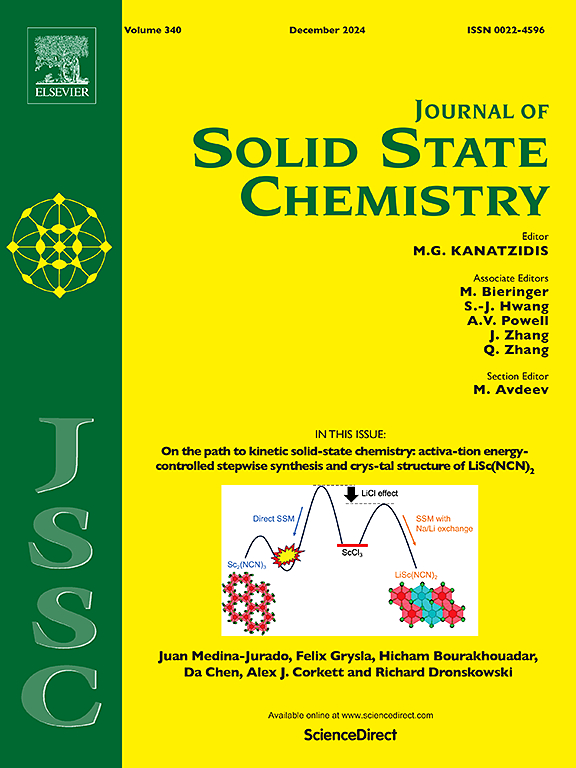Improvement of thermoelectric properties through meso-hierarchical engineering approach – Thermoelectric cooler modelling aided study
IF 3.2
3区 化学
Q2 CHEMISTRY, INORGANIC & NUCLEAR
引用次数: 0
Abstract
Exploiting materials with high thermoelectric performance (TEP) is crucial for improving energy conversion efficiency and addressing future energy needs. This study reports the influence of meso-hierarchical engineering approach on structural properties, and TEP of Bi/Sb–Te based compounds. The meso-hierarchical engineering approach is based on substitute a certain amount of single-crystalline p-type Sb2Te3 (ST) like-nanoplates into polycrystalline p- and n-types Sb1.5Bi0.5Te3 (SBT) and Bi2Te0.3Se2.7 (BTSe) nanoparticles, respectively. The characterizations showed that the incorporation of ST into the SBT increases the density of nano-micro grains and the number of interfaces. Thereby, for 10%ST/SBT the electric conductivity, Seebeck coefficient, and power factor parameters were improved by 56.41 %, 8.75 % and 57.93 %, at ambient temperature compared to bulk SBT alloy, respectively. The lattice and total thermal conductivities were achieved a significant drop of 20.83 % and 20.34 % for 10%ST/SBT alloys at ambient temperature. Furthermore, 5%ST/SBT and 10%ST/SBT showed a remarkable a peak figure of merit (zT) of 1.1 and 1.13 were obtained at 328 and 303 K, respectively. Based on the high TEP of 5%ST/SBT and BTSe in the temperature of 300–400 K were used as p-and n-type legs to analyze the certain sized TE cooler model. The numerical modeled TEC observed a maximum cooling temperature difference as 71.64 K at hot-side temperature of 379.46 K and cooling load of 0.2 W. Moreover, at optimal cooling load of 0.5 W the maximum cooling temperature difference was found to be 64.73K at hot-side temperature of 393.41 K.

求助全文
约1分钟内获得全文
求助全文
来源期刊

Journal of Solid State Chemistry
化学-无机化学与核化学
CiteScore
6.00
自引率
9.10%
发文量
848
审稿时长
25 days
期刊介绍:
Covering major developments in the field of solid state chemistry and related areas such as ceramics and amorphous materials, the Journal of Solid State Chemistry features studies of chemical, structural, thermodynamic, electronic, magnetic, and optical properties and processes in solids.
 求助内容:
求助内容: 应助结果提醒方式:
应助结果提醒方式:


